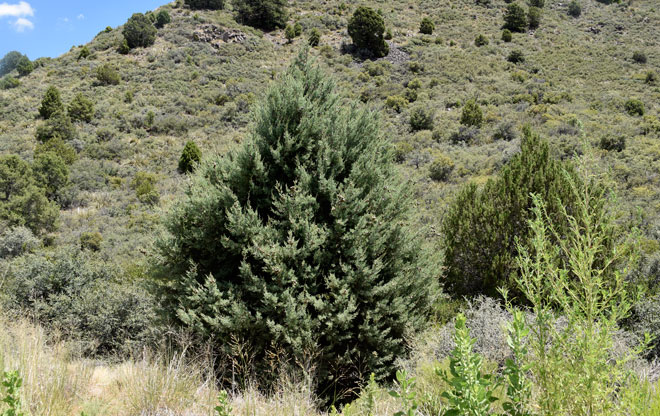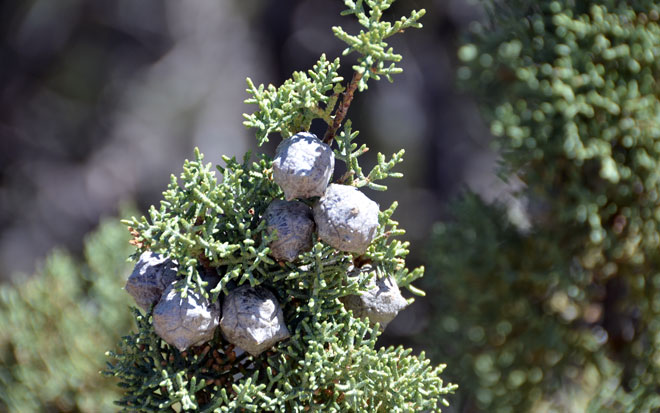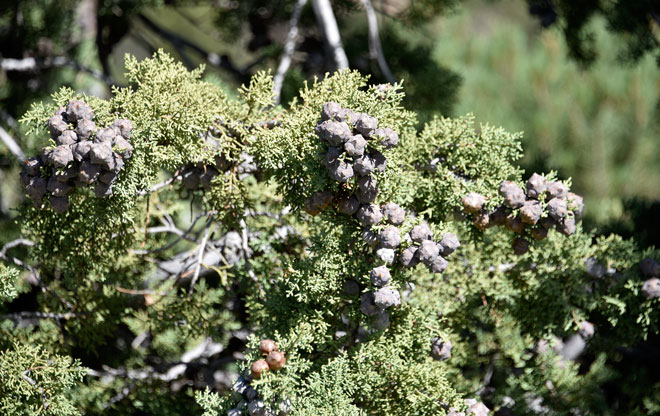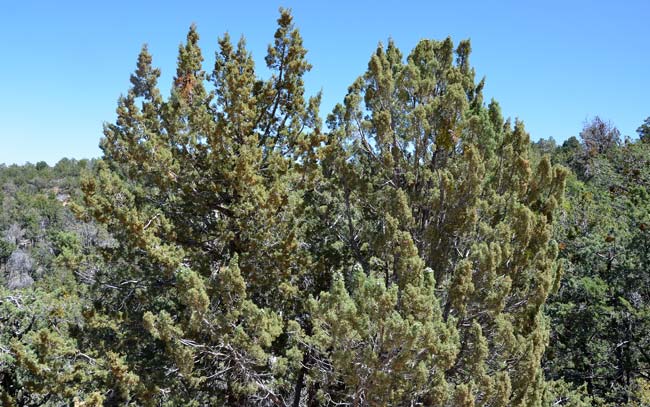Cupressus (= Hesperocyparis) arizonica, Arizona Cypress




Scientific Name: Cupressus arizonica (= Hesperocyparis arizonica)
Common Name: Arizona Cypress
Also Called: Rough-bark Arizona Cypress (Spanish: Sabino, Cedro, Ciprés, Táscate)
Family: Cupressaceae, Cypress Family
Synonyms: (Callitropsis arizonica, Cupressus arizonica, Cupressus arizonica subsp. arizonica, Cupressus arizonica var. bonita, Hesperocyparis arizonica, Neocupressus arizonica)
Status: Native
Duration: Perennial
Size: Up to 70 feet tall more or less, 15 to 20 feet wide; circumference max to 5.5 feet.
Growth Form: Tree; pyramid-shaped tree; trunk branches near the ground or is well developed; plants becoming shrubby when subject to fires, crown conic initially, becoming broadly columnar, dense; bark smooth initially but may become rough, furrowed or fibrous, rarely checkered; mature specimens with smooth bark previously known as Smooth-bark Arizona Cypress (Cupressus arizonica subsp. arizonica); branchlets decussate.
Leaves: Green, gray-green to blue-green; small, scale-like, flattened against the branchlets; with glands that produce drop of resin; evergreen.
Flower Color: Non-flowering species; cones only; gymnosperm; seed cones nearly globose with woody scales that separate at maturity, persistent on the branches several years after the seeds have fallen; seeds numerous.
Flowering Season: November to March for cone development; non-flowering gymnosperm.
Elevation: 3,000 to 7,000 feet.
Habitat Preferences: Variable; Canyon bottoms, pinyon-juniper woodland and chaparral communities.
Recorded Range: Arizona Cypress is found in the southwestern United States in; AZ, CA, NM, NV, TX, UT. It is also native to Baja California and northern Mexico.
North America & US County Distribution Map for Cupressus arizonica; (=Hesperocyparis arizonica).
U.S. Weed Information: No information available.
Invasive/Noxious Weed Information: No information available.
Wetland Indicator: No information available.
Threatened/Endangered Information: In North America, Arizona Cypress, Cupressus arizonica is "Protected as a Cactus, Yucca or Christmas Tree" by the State of Nevada.
In the Southwestern United States: Arizona, Nevada, New Mexico, Texas and Utah have 1 species of Hesperocyparis, California has 11 species. All data is approximate and subject to taxonomic changes.
Comments: Arizona Cypress is drought-tolerant, aromatic and often very attractive. It is cultivated in the southern United States as an ornamental and for windbreaks. In some parts of the southwest it is grown as a Christmas tree. This species has also been used in the past locally for rough construction and fencepost. Bark texture is not a clear characteristic to distinguish geographic varieties as within the species as a whole there is complete inter gradation between bark types.
Type species of Cupressus arizonica is from near Clifton, Arizona; (Green in 1880).
Arizona Cypress occurs in a variety of habitats. One such habitat is canyon riparian associations which include a few typically riparian species such as Arizona Sycamore (Platanus wrightii), Fremont Cottonwood, (Populus fremontii) and Arizona Walnut (Juglans major).
For a comprehensive thoroughly documented review of Cupressus arizonica see the USDA USFS Fire Effects Information System, or FEIS.
In Southwest Desert Flora also see: California Juniper, Juniperus californica, Redberry Juniper, Juniperus coahuilensis, Alligator Juniper Juniperus deppeana, Oneseed Juniper, Juniperus monosperma and Utah Juniper, Juniperus osteosperma.
California Juniper has been used as an analgesic and other important medicinal purposes by southwestern United States indigenous peoples.
See complete listing of ethno-botanical uses at Native American Ethnobotany, University of Michigan, Dearborn.

